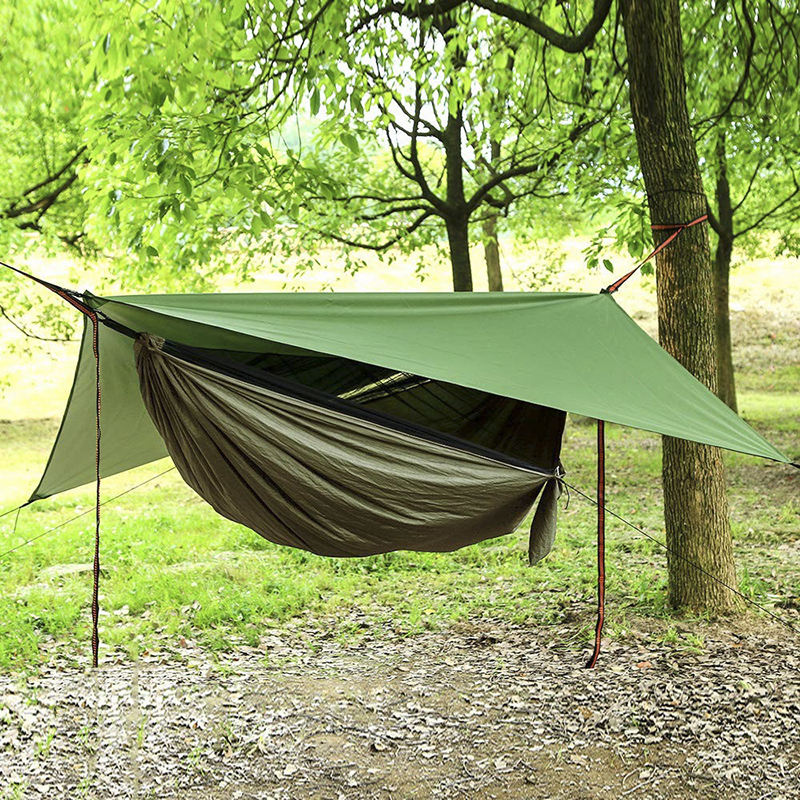Camping hammocks have become increasingly popular over the years for their lightweight and portable nature, as well as their ability to provide a comfortable sleeping solution in the great outdoors. In this guide, we’ll cover everything you need to know about camping hammocks, from the different types available to the accessories that can enhance your experience.
- Types of Camping Hammocks
There are several types of camping hammocks available, each with its own set of features and benefits.
- Traditional Camping Hammocks: These hammocks typically come with two spreader bars on either end, which keep the hammock flat and taut. They are typically made of cotton or polyester material, and they can be heavy and bulky.
- Lightweight Camping Hammocks: These hammocks are designed with backpackers in mind and are made of lightweight, durable materials such as nylon. They are typically smaller than traditional hammocks and are easy to pack and carry.
- Double Camping Hammocks: These hammocks are designed for two people and can hold up to 500 pounds. They are typically wider than traditional hammocks and come with extra features like a mosquito net or rainfly.
- Hammock Accessories
While a camping hammock can be a comfortable sleeping solution on its own, there are several accessories that can enhance your experience.
- Hammock Straps: These straps are used to attach the hammock to trees or other supports. They are typically made of nylon webbing and come with adjustable loops that allow you to adjust the height of the hammock.
- Mosquito Net: A mosquito net is essential if you plan on camping in areas with a lot of bugs. It can be attached to the hammock with clips or zippers and will provide protection while you sleep.
- Rainfly: A rainfly is used to protect your hammock from rain and wind. It is typically made of waterproof nylon and can be attached to the hammock with cords or clips.
- Underquilt: An underquilt is used to insulate your hammock and keep you warm in cooler temperatures. It is typically made of synthetic materials or down and is attached to the bottom of the hammock with cords or clips.
- How to Set Up a Camping Hammock
Setting up a camping hammock is relatively straightforward, but it’s important to do it correctly to ensure your safety and comfort.
- Find a suitable location: Look for two sturdy trees that are about 12-15 feet apart. Make sure the trees are healthy and not rotten or infested with insects.
- Attach the hammock straps: Wrap the hammock straps around the trees and secure them with the adjustable loops. Make sure the straps are tight and secure.
- Attach the hammock: Clip the hammock to the straps using the carabiners or other attachments provided. Make sure the hammock is level and not too tight or too loose.
- Add accessories: If you’re using a mosquito net, rainfly, or underquilt, attach them to the hammock as directed.
- Safety Tips
While camping hammocks are generally safe, there are a few things to keep in mind to ensure your safety and comfort.
- Check your gear: Before setting up your hammock, inspect it for any damage or wear and tear. Make sure your hammock straps and other accessories are in good condition and working properly.
- Choose a suitable location: Make sure the trees you choose are healthy and strong enough to support your weight. Avoid setting up your hammock near steep drops or rocky terrain.
- Follow manufacturer instructions: Always follow the manufacturer’s instructions when setting up your hammock and accessories. If you’re unsure about anything, consult the user manual or contact the manufacturer for assistance.
- Don’t exceed weight limits: Make sure you know the weight limit of your hamm


